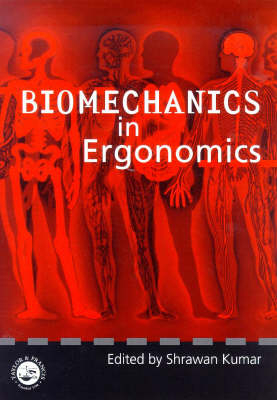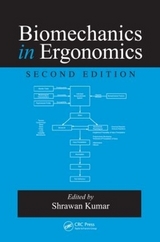
Biomechanics in Ergonomics
Taylor & Francis Ltd (Verlag)
978-0-7484-0704-0 (ISBN)
- Titel erscheint in neuer Auflage
- Artikel merken
Two important goals of ergonomics are the comfort, and the health and safety of workers. In many ways these are mutually compatible, for where health and safety is jeopardized, the discomfort results. Most work-related injuries can be viewed as biochemical damage to a tissue or organ; ultimately all injuries are sustained by tissues.
Written by leaders in the field, this text deals systematically with the biomechanics of tissues and organs in the workplace. The book establishes a foundation for the understanding of gross biomechanical loads on the human system at tissue level. It also provides details of the biomechanics of organs, themselves a composite of different tissues, and the differential effect and vulnerability of structures of the organ. Finally, the whole body system is dealt with in a biomechanical context. This text is a thorough description and discussion of common or work-related injuries, their mechanisms and the theories behind them. Chapters provide ergonomic relevance, ergonomic scenarios, and practical ergonomic advice on appropriate interventions.
Part 1 Introduction. Part 2 Tissue mechanics: Connective tissues -collagen, cartilage, bone, Sharwan Kumar, Savio Woo; Muscle, Robert Norman; Skin, Shrawan Kumar. Part 3 Organ mechanics: Wrist and hand, Tom Armstrong; Elbow, K.N. An; Neck and shoulder, Roland Kadefors; Lumbar spine, M.M. Panjabi; Lower extremities, David Winter. Part 4 Body mechanics: Occupational activities - lifting/lowering, Don Chaffin, pulling/pushing, M.M. Ayoub, pinching/gripping/squeezing, K.N. An, keyboarding, David Rempel, standing, Jan Dul, sitting, Jorgen Eklund, pedalling/kicking, Robert Webb,; arm cranking, Peter Buckle, twisting, Shrawan Kumar; occupational stresses - posture and balance, Steve Konz, slip and fall, Albert Schultz, vibration, Malcolm Pope. Part 5 Injury mechanisms: trauma - whiplash, M.M. Panjabi, disc injury, Tommy Hanson, facet injury, Duncan Troup, pulled muscle, Ian Stokes, sprained ligament, Cy Frank, joint dislocation, Tapio Videman, fracture, Ronald Zernicke, seat belt and motor vehicle accidents, Shrawan Kumar, cumulative trauma, Peter Buckle, Tom Armstrong. Part Biochemical models for body parts: Hands, Tom Armstrong; Wrists, Tom Armstrong; Elbows, K.N. An; Shoulder, Ali Engin; Neck, Mats Hagbergl Low back, Stu McGill; Hip, Mathias Jaeger; knees; ankles and feet. Part 7 Theory of injury causation and control strategies, Shrawan Kumar. Part 8 Future directions.
| Erscheint lt. Verlag | 25.3.1999 |
|---|---|
| Verlagsort | London |
| Sprache | englisch |
| Maße | 178 x 254 mm |
| Gewicht | 748 g |
| Themenwelt | Medizin / Pharmazie ► Medizinische Fachgebiete ► Sportmedizin |
| Studium ► 1. Studienabschnitt (Vorklinik) ► Physiologie | |
| Technik | |
| ISBN-10 | 0-7484-0704-9 / 0748407049 |
| ISBN-13 | 978-0-7484-0704-0 / 9780748407040 |
| Zustand | Neuware |
| Haben Sie eine Frage zum Produkt? |
aus dem Bereich



